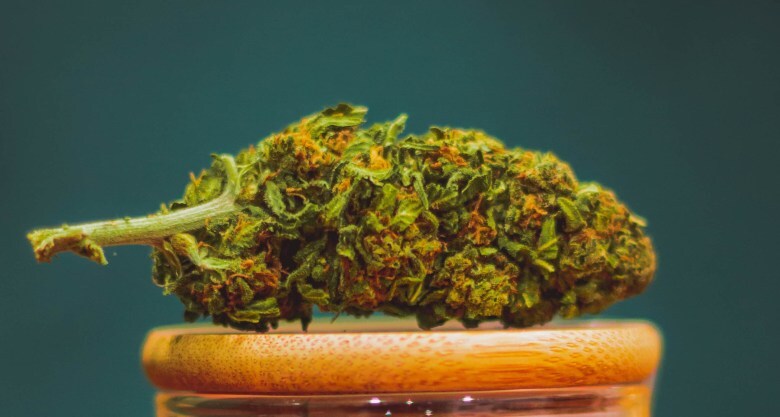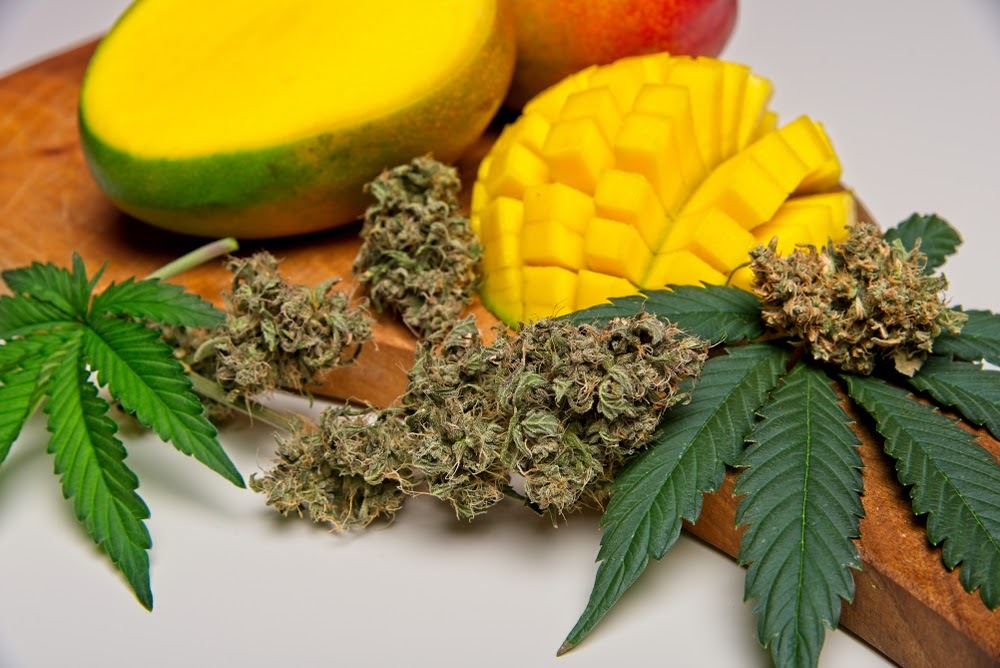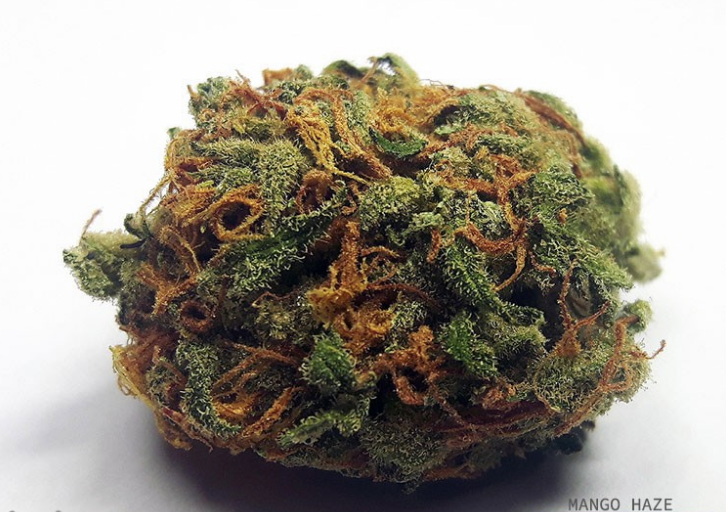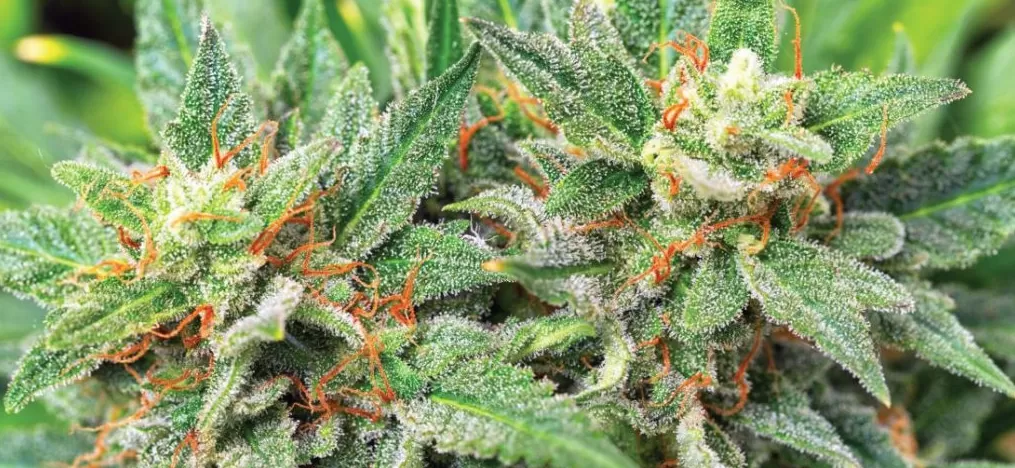Beloved by regular cannabis users, the Mango Haze marijuana strain is a cross of predominantly sativa genetics, the brainchild of Mr.Nice Seeds Bank, who crossed award-winning strains such as Northern Lights #5, Skunk and Haze to create a genetics with a pleasant fruity flavour and totally uplifting effects. Similar to the much-loved Super Silver Haze marijuana strain, Mango Haze stands out with a distinctive mango aroma and vibrant cerebral sensation, making this herb suitable not only for newbies but also for experienced users. Extremely rich in THC, this makes her one of the most popular genetics, with a strong, prominent high that stimulates creativity and a pleasant feeling of well-being and relaxation. In this article we will find out everything about Mango Haze, its effects and how to grow it in order to obtain a good weed, giving a satisfying and truly satisfying experience.
What is the Mango Haze variet

The Mango Haze marijuana strain is a sativa-dominant hybrid genetic, the result of careful research and experimentation carried out by the expert hands of internationally renowned breeders such as Shantibaba and Nevi of Mr.Nice Seeds Bankl: it is therefore a 'creature' born from the combination of famous and appreciated strains such as Haze, Skunk #1 and Northern Lights #5 expertly mixed to give life to a real THC concentrate, approximately 24%.
The aroma of the inflorescences is very special and, as the name suggests, it brings out the sweet and mainly tropical scents of mango, which tend to become more evident and intense with every puff.
The effects of Mango Haze cannabis are important: right from the first puff the proverbial potency is not long in making itself felt, resulting in a mostly cerebral high that gives a pleasant feeling of well-being and good humour. However, we must always bear in mind that the Mango Haze variety is one of the most THC-rich genetics and therefore has a high psychotropic effect. It must be taken in moderation, especially by occasional users, to avoid unpleasant side effects caused by overdosing.
Relatively easy to handle and grow, the Mango Haze variety is not, however, suitable for hurried and impatient growers. The flowering period lasts for about 10 weeks, but yields range from 450 to 550 grams per square metre. When used for outdoor cannabis cultivation, the harvest period is between the end of October and the beginning of November.
History, morphological characteristics and how to recognise it

The Mango Haze cannabis variety is a cornerstone of this strain and, as with all strains originating from generic Haze, it is also sativa-dominant. Many believe its origins to be uncertain, although as mentioned earlier, it is believed that the original idea was developed by the breeders at Mr. Nice Seeds Bank. What is certain today is that it is a very successful cross of the three famous varieties Skunk, Haze and Northern Lights, "parents" of the equally famous and beloved Super Silver Haze.
However, Mango Haze differs from Mango Haze due to the Nothern Lights strain used in the hybridisation process, specifically Northern Light #5 Haze, a small detail which nevertheless results in a marijuana strain with a pleasantly fruity taste and relaxing, powerful effects. What makes Mango Haze cannabis so popular is undoubtedly its characteristic sweet and intense aroma, although growers tend to appreciate it because of the plants' remarkable resilience, regardless of weather and climate conditions, making it well suited for outdoor cannabis cultivation in hilly areas.
The female inflorescences produced by Mango Haze cannabis have a very intense colouration when they reach maturity, generally turning from bright orange to purple. The green is concealed by the multitude of red and orange trichomes, although it is clear but still bright. It is difficult to produce particularly large inflorescences, precisely because the Mango Haze plant tends to grow mainly in width, concentrating only minimally near the buds at the top. However, the amount of weed resin produced from the buds is significant, as it is able to accommodate exceptional concentrations of THC and CBD, ranging from 18 to 24%.

What makes Mango Haze one of the most popular cannabis strains is undoubtedly its delicate and persistent aroma that never gets old. The flavour is smooth, velvety and rounded, enhanced by an exotic fruit aftertaste of mango and papaya. The smell is light, sweet but never cloying or overpowering, making this marijuana the most popular among demanding female users and Haze strain lovers alike, thanks to a high amount of terpenes.
How to smoke Mango Haze and what effects it has
The Mango Haze marijuana variety, thanks to the very high presence of cannabinoids, especially THC, gives a pleasant feeling of an energizing high, making it perfect to be taken during the day, rolling a joint or alternatively using a bong, after having properly shredded the buds by means of a weed grinder: however, in the latter case attention must be paid to dosages in order not to risk making the psychoactive effects, already very intense, excessive.
The immediate high feels comforting and cerebral, clearing the mind and thoughts and quickly banishing negativity. From the very first puffs, it infuses energy and motivation, making this herb perfect for optimising all kinds of daily activities. Mango Haze cannabis can therefore be used to promote creative activities such as composing music or writing, as well as to make common recreational activities such as play and sports more enjoyable and exciting. Perfect for socialising as well as outdoor activities, Mango Haze marijuana strains provide a relaxing sensation over time that spreads throughout the body, perfectly balancing the previous mental stimulation. Very pleasing to the palate, this 'good weed' genetics is however unsuitable for those who tend to suffer from anxiety and paranoia, as the high THC concentrations may exacerbate these disorders, making them even more unpleasant.
Side effects of Mango Haze
The side effects of the Mango Haze variety are the same as those of the Haze genetics, which can alternate with the perceived high and euphoria from the high cannabinoid content. Generally, overdose can cause anxiety, paranoia, panic attacks, mood swings and fear in severe cases, but these tend to resolve spontaneously within a few hours without the need for medical intervention, provided the user is placed in a calm, relaxed environment away from possible sources of psychological and emotional stress.
Less pronounced, on the other hand, may be complaints such as migraine, headache, hypertension and increased heart rate, dizziness, dry eyes and mouth, difficulty in moving and a distorted perception of the surrounding space, all phenomena typical of excessive intake of plant matter.
Growing Mango Haze indoors: techniques and tips
The Mango Haze cannabis variety is not one of the easiest genetics to grow. One of the most common problems complained about by growers is the rather long flowering period of about 9 to 11 weeks. The inflorescences in outdoor cannabis cultivation are usually ready to be harvested and dried by the end of October or early November at the latest. It goes without saying that, although easily adaptable, Mango Haze cannabis has its problems in cool climates with short summers. So if you choose to grow cannabis in an open space, it is best to do so in areas with a warm or Mediterranean climate.
Easy to manage when grown indoors, the Mango Haze cannabis plant is generally no taller than 100-150 cm, making it relatively easy to control its development in a grow box or grow room. Mango Haze plants are also suitable for growing in greenhouses and develop a large, resin-covered central inflorescence with an intense tropical fragrance, so it's a good idea to have an adequate ventilation system with activated carbon filters to limit dispersion so as not to attract too much attention. Lastly, the yield of Mango Haze cultivation is excellent, with 450 to 550 grams of herb per square metre when grown indoors. This is different for outdoor cultivation, which generally offers an average yield.
 Italiano
Italiano Español
Español English
English Français
Français Deutsch
Deutsch
